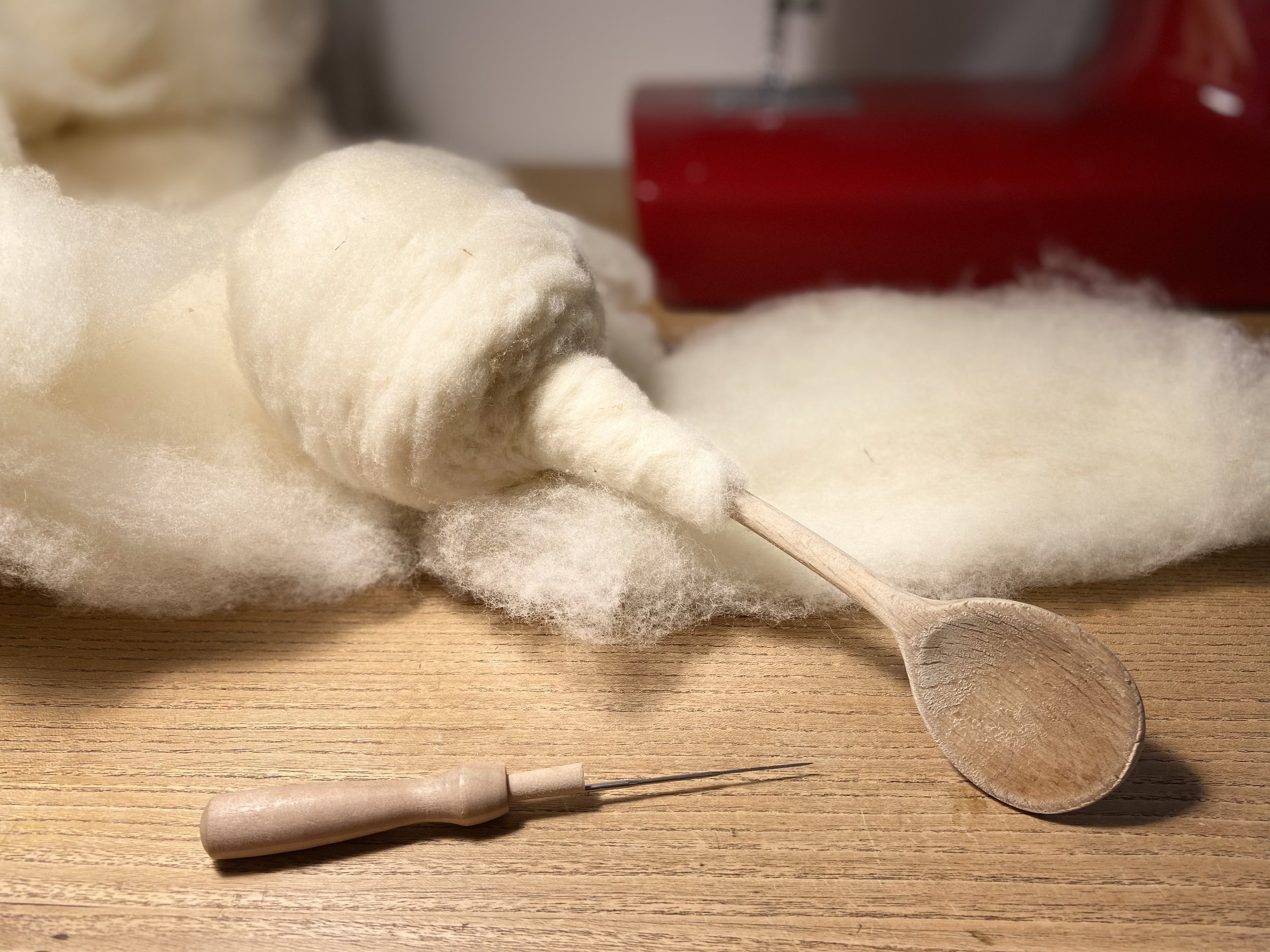Doll Making and Illustrating (for) Children
When my daughter was four years old, I wanted to give her a baby doll for Christmas. I started looking at what was available online and in shops, and it all pretty much horrified me. I was confronted by an army of creepy little plastic corpses that wanted to pee on you and needed to be outfitted with more accessoires than an actual baby. It was the opposite of what I imagined a doll that will be loved by a child for many years should be. But then I discovered the world of natural fiber art dolls online, and fell in love immediately.
Without any idea how much work it would actually be, I decided to make a doll for my daughter. Natural fiber dolls range from very simple to incredibly realistic baby dolls; but they are all built up in a similar way - a core usually made out of wool, covered with fabric. My personal taste is more on the realistic end, so I learned how to sculpt the wool core. This is done by needle felting, which basically means stabbing a very narrow, serrated blade into the wool again and again. It feels like a weirdly brutal thing to do, but also has a meditative quality, not unlike creating a drawing from thousands of little dots. And watching a three-dimensional shape emerge under your hands is incredibly satisfying.
A simple beginning - wool wrapped around an old wooden spoon.
The needle felted head - at this point, it is still only wool.
Once the head is sculpted, it is covered in fabric. The eyes are embroidered, and the hair added. There are many different ways to do this - I like to crochet a little wig from mohair, as it gives just enough length to brush it or make little braids, but isn‘t too complicated to make.
The body is made in a similar way, a core of wool that can be either sculpted or simply stuffed into fabric. I loved the freedom of adding some little details like cute little toes, and keeping other parts very simple.
I just love those chubby little feet!
Experimenting with movable hands. Details like this take time and patience, as the fabric has to be sewn by hand, with tiny stitches.
I find that making dolls and illustrating (for) children has a similar process in the sense that I am creating an interpretation of reality and of my imagination. Neither a doll nor an illustration can ever be the same as an actual, real baby or child. It has to be an interpretation, and as the artist, you have to decide what to emphasize or leave out. The medium may be different, but the decision-making behind it is very much the same. You have to decide how to “translate” what an actual baby looks like into what it could look like as a doll made from fabric. At the same time, you are creating a unique character, one that tells a story. This may seem more obvious when it comes to illustration, but is also true for dolls. The expression of the face, the colors, the clothes and accessories - those are all choices that tell us something about who this little person is.
I‘ll leave you with a picture of the first doll I made, the one that started it all. I barely finished her in time for Christmas, but it was so worth the late nights. My daughter loved her immediately, in the way that children do, and named her Moya. Even though I barely knew what I was doing, Moya has so much personality (and seems full of energy - just like my daughter). I really believe I became a better artist and a better illustrator by learning how to make dolls. There is one big difference between doll making and illustration, though: There will only ever be one Moya in the whole world, while books are infinite.







